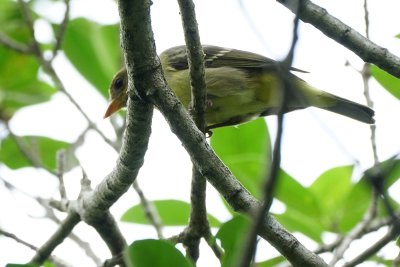Zackiedawg
Well-known member
We've been having a few waves of migrating birds starting to pass through our area - redstarts, pine and prairie warblers, b&w warblers, and even a prothonotary. Mixed in to all my shots as this one I'm having difficulty figuring out. The top part of the head really showed a reddish-orange tinge in person, and seemed fairly solid colored. It never gave me a clean shot, being shy and staying in the cover of the branches, so I only got a few possible ID-able shots...
1. https://g4.img-dpreview.com/785287BD746D4910B514695154BC2CE5.jpg
I can't promise this is the same bird, but I think it is, though the reddish colors don't show very well as it was in extreme shade:
2. https://g1.img-dpreview.com/3C8AD1C93BCF479ABAC225E8680FEFB5.jpg
And just to throw in one more, I'm pretty sure this is a pine warbler - it's a clean shot out in the open, and there were lots of others around, but I'm used to them having yellow eye-rings and this one was more white...I'm not as good with the seasonal colors such as first fall or juvenile, so just wanted to confirm that's what this one is:
3. https://g3.img-dpreview.com/B2E039D61E2347E9B4FFD2D09BD72156.jpg
1. https://g4.img-dpreview.com/785287BD746D4910B514695154BC2CE5.jpg
I can't promise this is the same bird, but I think it is, though the reddish colors don't show very well as it was in extreme shade:
2. https://g1.img-dpreview.com/3C8AD1C93BCF479ABAC225E8680FEFB5.jpg
And just to throw in one more, I'm pretty sure this is a pine warbler - it's a clean shot out in the open, and there were lots of others around, but I'm used to them having yellow eye-rings and this one was more white...I'm not as good with the seasonal colors such as first fall or juvenile, so just wanted to confirm that's what this one is:
3. https://g3.img-dpreview.com/B2E039D61E2347E9B4FFD2D09BD72156.jpg





